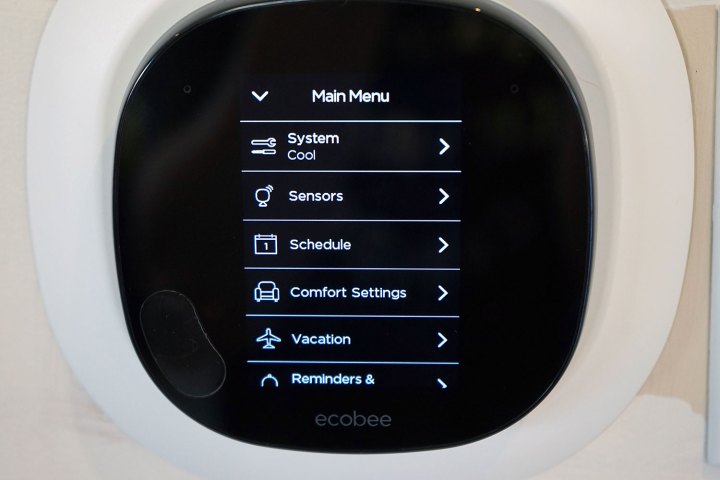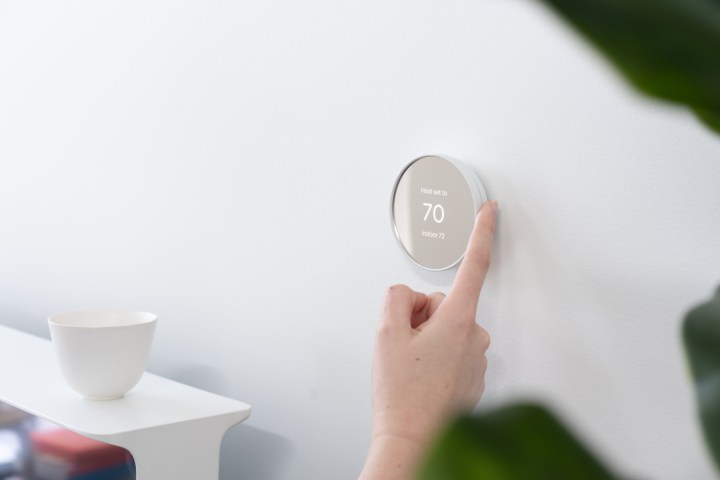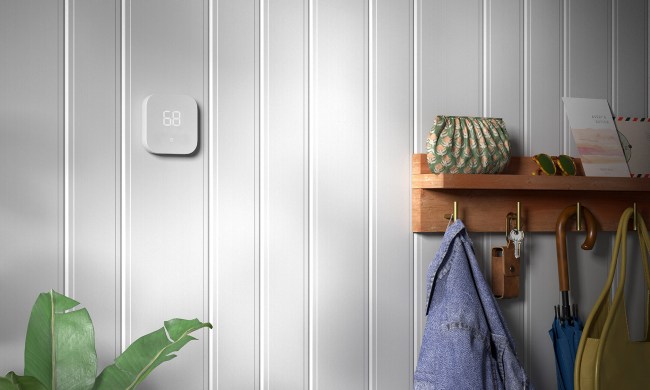The advantages of smart thermostats are very apparent — not only do they look good and give you remote access through a smartphone, but they can save money on your energy bills. But are there any disadvantages to the popular smart home product? And will any old smart thermostat do, or should you spring for an expensive model?
Let’s dig into all the pros and cons of smart thermostats to help you decide if one is right for your home.
Pro: Smart thermostats save you money

One of the first questions that likely come to mind when considering a smart thermostat is “does it really save money?” In short, yes it does, but how much specifically will vary by brand, home, and occupancy. There are plenty of aspects to consider, but you can expect roughly 10% in electrical savings. Eventually, you should start to reap those savings in your electric bill.
If you want the most savings, consider opting for a “learning” smart thermostat that can better adapt to your schedule and suggest better temperature settings. The Nest Learning Thermostat is a great option.
Pro: Smart thermostats are easy to use
One of the biggest benefits of smart thermostats is their usability. The core function of keeping your controlling your climate can be done manually or with simple programmable thermostats. The key is lowering the barrier to that task so you’re more likely to use it. You’re less likely to get up and move the dial of your thermostat down a few degrees than you are to use your phone to set up a command to do it all automatically in the future.
The only caveat here is that some folks are not especially tech-savvy, so learning how to use the smartphone app or voice assistant commands could be a challenge. There is a lot going on that makes a smart thermostat work, after all. Even if the app is simple enough for them, people can have a natural resistance to big technological changes that seem intimidating.
Pro: Set it and forget it
Over time, a smart thermostat’s ability to predict your coming and going improves, and in turn, it can more accurately control the climate. Sure, there’s quite a bit to do for the initial setup, but once it’s all done, smart thermostats tend to take care of themselves, with minimal tweaking from users. Not having to think about temperature control in the house is a real benefit. Even the few times you need to make tweaks, while you’re off on vacation, for example, the interfaces tend to be so smooth that it’s a painless experience
Con: Installation can be a hassle
Installing a smart thermostat requires a little bit of elbow grease. If you’re not comfortable dealing with the wires in your walls, or navigating studs and drywall when mounting the thermostat, you may have to hire someone to help get everything set up.
One particular bump in the road are common wires. These blue C-wires provide power to a smart thermostat so it can run software continually. Older homes may not have a C-wire, which may necessitate an adapter. These adapters are another installation hurdle and can require a fair bit of rewiring, although they’re not too terrible to set up — all products with C-wire adapters will give you step-by-step details on how to get them working properly.
Con: Benefits depend on occupancy

How people come and go from your house will largely shape the way a smart thermostat makes adjustments. If you’re always home, or if you have a pet always in the house, the ability for a smart thermostat to reduce climate control automatically isn’t especially useful; odds are you’ll want to keep a steady temperature all day long.
Similarly, if you’re not staying in one place long enough for a smart thermostat to get to know your habits, you’ll also see little benefit. It may be worth holding off on the purchase if you know you’re going to be moving within the next year. Once you’re settled in at the new digs, a smart thermostat will be able to properly assess the climate profile of your home.
Con: Can be expensive
Though some of the newest smart thermostats are really gunning for affordability, the most fully featured models currently available can get fairly pricey. In these instances, you’ll be looking at paying over $200 for a smart thermostat, when a standard model can be as cheap as $20. The added cost of smart thermostats can often be mitigated by rebates provided by local governments or service providers. Even if $200 is totally affordable, getting a free smart thermostat is totally worth it if possible. Many argue that you even earn that cost back in the long haul with electrical savings.
Con: There are potential security concerns
The ballooning number of connected devices in the home is introducing new gateways for malicious actors to gain access to networks. Nest Thermostats have been attack point vectors in the past, but software updates routinely patch gaps as they become apparent.
Even under less nefarious circumstances, Nest is owned by Google, which, despite making routine pledges to protect privacy, has a vested interest in user data. Besides its potential application in advertising, this user data could potentially be handed over to law enforcement, according to one cybersecurity firm.
All in all, the pros of having a smart thermostat outweigh the cons. Price, learning curve, security, and installation challenges are all quite circumstantial. Meanwhile, the convenience of easier home climate control and the energy savings you enjoy in the long run are worth the price of admission.



